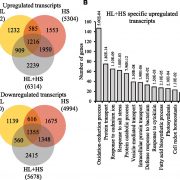
Jasmonic Acid and High Light and Heat Stress
Plant Physiology, Plant Physiology: On The InsidePlants often experience high light (HL) intensities in the field, many times in conjunction with elevated temperatures. Such conditions are a serious threat to agriculture production, because photosynthesis is highly sensitive to both HL intensities and high-temperature stress. During HL stress, the…
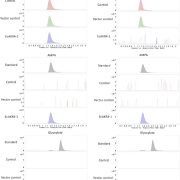
Glyphosate Resistance in Barnyard Grass
Plant Physiology, Plant Physiology: On The InsideGlyphosate is the world’s most commonly used herbicide, owing to its high efficacy, broad spectrum, and systemic mode of action. Most plant species cannot significantly metabolize glyphosate, which is a major factor contributing to its lethality in plants. However, the widespread adoption of glyphosate-tolerant…

Plant Calmodulin-Dependent NAD+ Kinase
Plant Physiology, Plant Physiology: On The InsideA common plant response to a variety of stresses is an influx of calcium (Ca2+) ions followed by an apoplastic burst of reactive oxygen species (ROS). This ROS burst is generated by Ca2+-dependent plasma membrane NADPH oxidases. A rapid increase in the NADP(H) pool size may be required to sustain the…
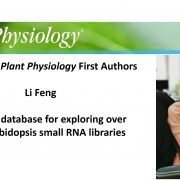
Recognizing Plant Physiology authors: Li Feng
Plant Physiology, Plant Physiology: Author ProfilesLi Feng, first author of An online database for exploring over 2,000 Arabidopsis small RNA libraries
Current Position: PhD student in Biomedical Engineering, SUSTech-HIT Joint Graduate/PhD Project, Department of Biology & Institute of Plant and Food Science, Southern University of Science and Technology…
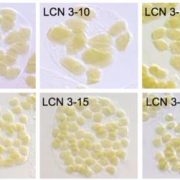
Decoding Natural Variation in Chloroplast Size
Plant Physiology, Plant Physiology: News and Views, ResearchLynn GL Richardson
[email protected]
Department of Plant Biology, Michigan State University, East Lansing, MI 48824
Chloroplasts, like their cyanobacterial ancestors, use binary fission to divide and generate new organelles. The origins of the division machinery stem from both the original eukaryotic…
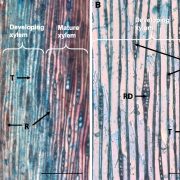
Ray Parenchymal Cells Contribute to Lignification
Plant Physiology, Plant Physiology: On The InsideIn conifers such as Norway spruce (Picea abies), lignin is a major cell wall constituent of secondary xylem (wood), forming approximately 27% of the dry weight. Lignin enhances the structural stability of wood as well as water transport through it. Lignification encompasses many steps, starting with…
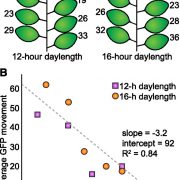
Plasmodesmatal Transport is Regulated by the Circadian Clock
Plant Physiology, Plant Physiology: On The InsidePlasmodesmata (PD) are membrane-bound tunnels that connect the cytosols of neighboring plant cells. The rate of PD transport between cells changes during the course of plant development. Forward genetic screens to identify factors controlling transport through PD have repeatedly revealed that chloroplasts…
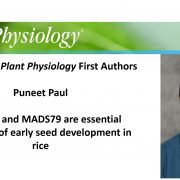
Recognizing Plant Physiology authors: Puneet Paul
Plant Physiology, Plant Physiology: Author ProfilesPuneet Paul, first author of MADS78 and MADS79 are essential regulators of early seed development in rice
Current Position: Post-Doctoral Research Associate at the Department of Agronomy and Horticulture, University of Nebraska-Lincoln
Education: Ph.D. in Plant Molecular Biology, Goethe University,…
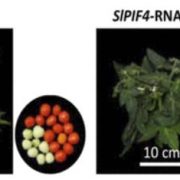
PIF4 plays a conserved role in Solanum lycopersicum
Plant Physiology, Plant Physiology: News and Views, ResearchScott Hayes, [email protected]
The adoption of Arabidopsis thaliana as a model plant in the early 1980s led to a revolution in plant molecular genetics. Its diminutive size, rapid generation time and small genome made Arabidopsis a fantastic tool, allowing us to build a complex picture of the genetic…

